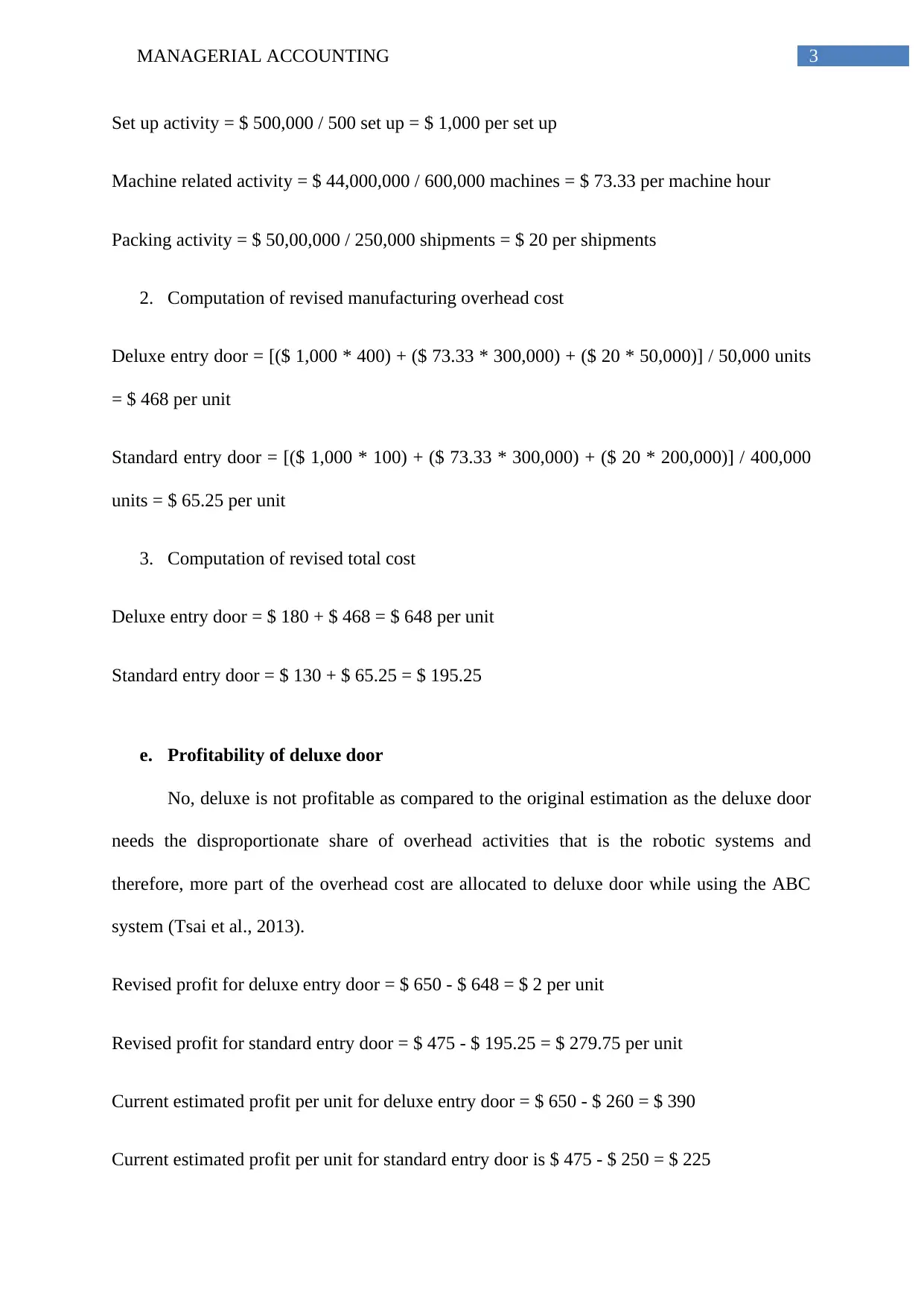Managerial Accounting: Cost Analysis and Sales Mix Strategy
VerifiedAdded on 2020/04/21
|6
|832
|327
Homework Assignment
AI Summary
This managerial accounting assignment analyzes the profitability of deluxe and standard entry doors, evaluating manufacturing costs and overhead allocation. The solution begins by outlining the current cost system, explaining manufacturing overhead, and examining machine-related costs. It then uses activity-based costing (ABC) data to compute cost driver rates and revised manufacturing overhead costs, determining the profitability of the deluxe door. The analysis reveals that the deluxe door is not as profitable as initially estimated due to disproportionate overhead allocation. Finally, the assignment considers required strategies for sales mix, focusing on market demand, capacity constraints, and customer willingness to pay, while acknowledging that costs do not influence the sales mix strategy. The solution references several academic sources to support its findings.
1 out of 6








![[object Object]](/_next/static/media/star-bottom.7253800d.svg)